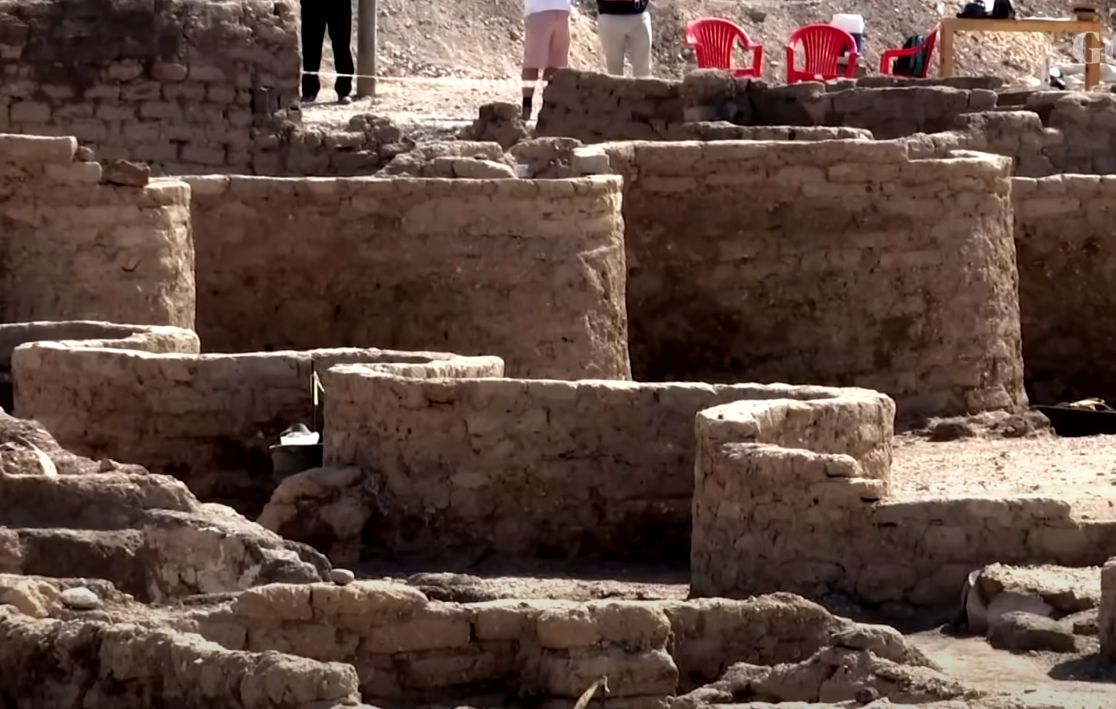The world-famous Egyptologist Zahi Hawass announced that he had discovered the lost capital of ancient Egypt on the west bank of the Nile in Luxor. The city was built by the Golden Pharaoh Amenhotep III, who reigned in the Golden Era of the New Kingdom.
During the New Kingdom, the West Bank of the Nile belonged among the most important centres of Egypt. The rulers had built numerous structures there, magnificent temples dedicated to the Egyptian gods, their own mortuary temples, extensive palaces and administrative complexes, and royal tombs in the nearby Valley of the Kings. During the reign of one of the most important rulers of the 18th dynasty (14th century BC) – Amenhotep III – a vast city grew up on the West Bank, known as The Rise of Aten. The metropolis had at the time no equal in Egypt. Amenhotep III – the father of the world-famous pharaoh Akhenaten and the grandfather of Tutankhamun – was often referred to as the Golden Pharaoh due to the grandeur and the splendour of his court and temples, tombs and palaces built at that time. That’s why Zahi Hawass speaks of his discovery as of the “lost Golden city.”
Search for the mortuary temple of King Tut
The huge metropolis spread between the mortuary temples of Amenhotep III in the north – with the world-famous Colossi of Memnon – and Ramesses III at Medinet Habu in the west. Egyptologists assumed that mortuary temples of the successors of King Tutankhamun – Pharaohs Ay and Horemheb – were built in this area. The discovery of the ruins of the city was, therefore, very surprising. Egyptian mission under the leadership of Zahi Hawass began its work in September 2020, so it has not yet been possible to determine the exact extent of the ancient city. However, archaeologists believe that it could continue further to the south – to the palace, which had Amenhotep III built in Malkata, 3 km away.

Egyptological treasure trove
Archaeologists discovered the remains of the city just a few inches below today’s terrain. The place is well preserved – the walls of the houses made of dried bricks are sometimes even three meters high, and their rooms even contain their original furnishings – ceramics vessels, furniture, tools, and small items made of glass, metal – as if their inhabitants had just left them there a while ago.
Archaeologists have discovered houses, as well as various workshops. In these workshops, the ancient Egyptians processed glass, produced amulets or dried bricks. There was a bakery, and nearby meat was processed and stored. Professor of Egyptian Art and Archaeology at the John Hopkins University Betsy Bryan said: “For those of us interested in the people and how they did stuff, this place is a treasure trove.” Further to the north, the Egyptian mission found a burial ground of inhabitants of the city. However, it is still waiting for more extensive excavations.
According to many Egyptologists, the Lost Golden city represents the second most significant discovery since the sensational tomb of King Tutankhamun found in the nearby Valley of the Kings in 1922.
“It will give us a rare glimpse into the life of the ancient Egyptians at the time where the empire was at its wealthiest,” said Zahi Hawass at the press conference.
Sources: https://dailynewsegypt.com/2021/04/08/egyptian-archaeological-mission-discovers-lost-golden-city-in-luxor/
https://www.businessinsider.com/photos-egyptian-archaeologists-uncover-lost-golden-city-luxor-2021-4






















